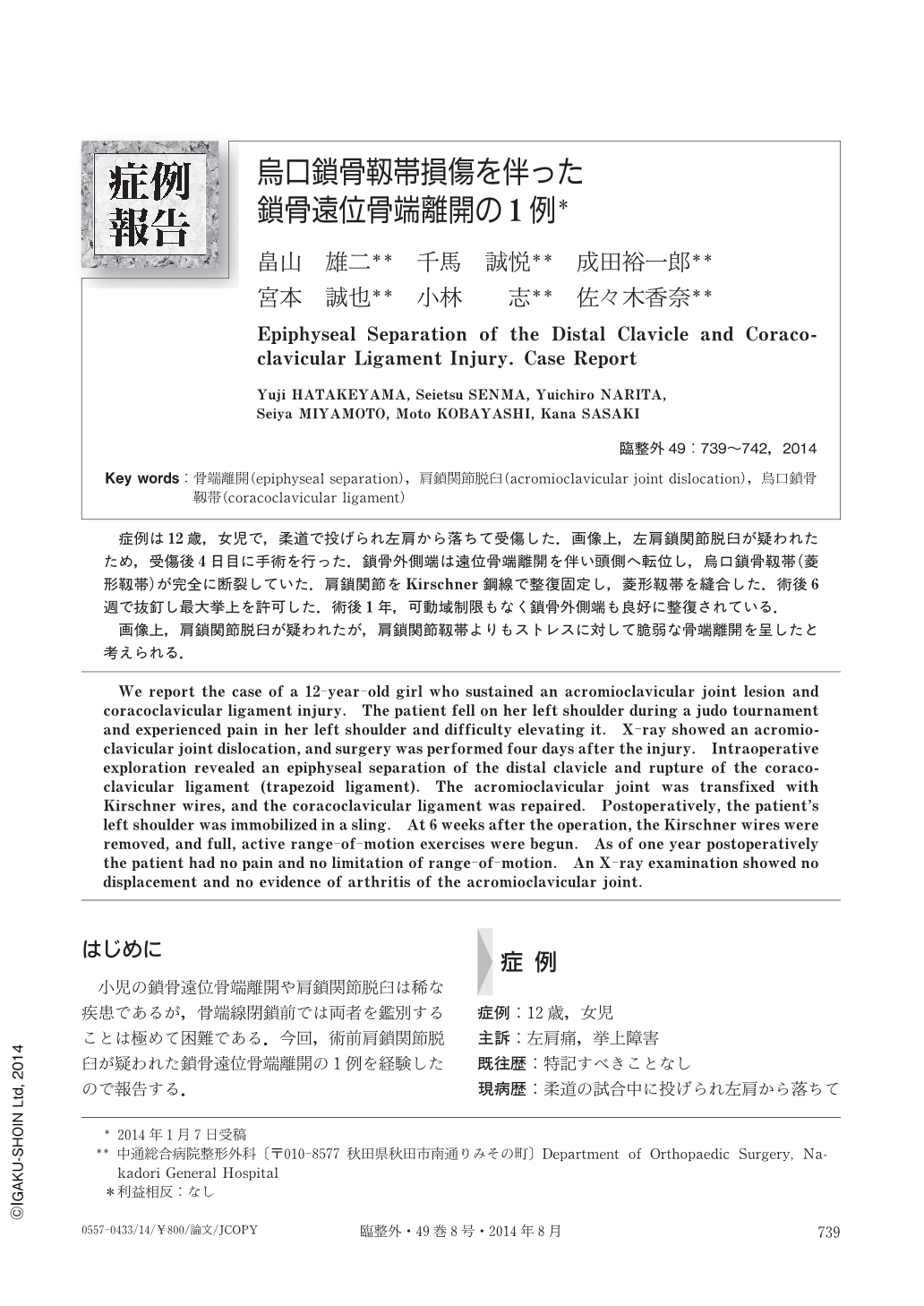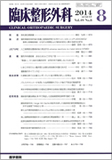Japanese
English
- 有料閲覧
- Abstract 文献概要
- 1ページ目 Look Inside
- 参考文献 Reference
症例は12歳,女児で,柔道で投げられ左肩から落ちて受傷した.画像上,左肩鎖関節脱臼が疑われたため,受傷後4日目に手術を行った.鎖骨外側端は遠位骨端離開を伴い頭側へ転位し,烏口鎖骨靱帯(菱形靱帯)が完全に断裂していた.肩鎖関節をKirschner鋼線で整復固定し,菱形靱帯を縫合した.術後6週で抜釘し最大挙上を許可した.術後1年,可動域制限もなく鎖骨外側端も良好に整復されている.
画像上,肩鎖関節脱臼が疑われたが,肩鎖関節靱帯よりもストレスに対して脆弱な骨端離開を呈したと考えられる.
We report the case of a 12-year-old girl who sustained an acromioclavicular joint lesion and coracoclavicular ligament injury. The patient fell on her left shoulder during a judo tournament and experienced pain in her left shoulder and difficulty elevating it. X-ray showed an acromioclavicular joint dislocation, and surgery was performed four days after the injury. Intraoperative exploration revealed an epiphyseal separation of the distal clavicle and rupture of the coracoclavicular ligament (trapezoid ligament). The acromioclavicular joint was transfixed with Kirschner wires, and the coracoclavicular ligament was repaired. Postoperatively, the patient's left shoulder was immobilized in a sling. At 6 weeks after the operation, the Kirschner wires were removed, and full, active range-of-motion exercises were begun. As of one year postoperatively the patient had no pain and no limitation of range-of-motion. An X-ray examination showed no displacement and no evidence of arthritis of the acromioclavicular joint.

Copyright © 2014, Igaku-Shoin Ltd. All rights reserved.


